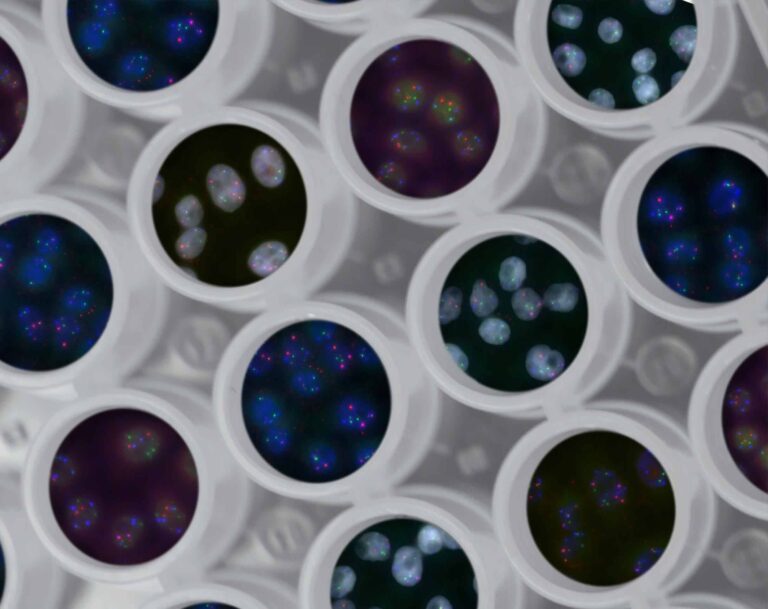Although written in 2020, Irreversible Damage discusses one of the most important subjects in the world today: transgenderism and how the subject is addressed in middle schools and high schools. As a teacher, I was surprised to find that at least 10% of my biologically female students are now identifying as either male, non-binary, or some categorization other than female. What was especially surprising about this is that I work for a boarding school in Alaska where students from all around the state come to attend high school. Even more surprising was that I found that other Alaska teachers were seeing the same trends. If this is the trend in one of the country’s most conservative states, I wondered, What kind of percentages are we seeing nationwide? I’m confident that these percentages cannot be known as many parents have no idea that their children are transgender or are identifying as something other than their biological sex.
In my preparation for teaching certification at a state university in New York, I was taught that painting your child’s room while pregnant could micro-aggress the child because, “subconsciously from the womb” that child can perceive that blue or pink paint is trying to confine them in the binary. I was instructed that we cannot abuse children by assuming that they will identify as the gender associated with their biological birth traits. At that time, I knew we were in a darker place than I had imagined even after years in youth ministry.
When I started my student teaching, and my mentor teacher handed kids a mental health survey asking them if their anxiety could be caused by being misgendered, I started to wonder if public educators across the country weren’t starting to lead kids to question their gender identity. My mentor’s wife introduced their newborn to the students at my school and gave the baby two names–one for if she identified as a male and an alternate in case she decided to identify as a female. I started to realize that what seemed like obscure narratives on far-left college campuses was trickling into societal practice far more quickly than I could have imagined.
“What seemed like obscure narratives on far-left college campuses was trickling into societal practice far more quickly than I could have imagined.”
According to an infographic pedaled by the Biden foundation in 2019, trans youth must be supported in the home and we need to realize that times are changing. Many more than a million trans youth inhabit our country. Since the percentage of trans youth has more than tripled where I work in the last three years, I can only imagine what those numbers look like today.
Irreversible Damage: An Important Book for This Moment
This is why I think that the book Irreversible Damage is such an important book for us to consider. Author Abigail Shrier holds a J.D. from Yale Law School, a B.Phil from Oxford, and an A.B. from Columbia among other credentials. She is no slouch who is rattling off a couple of personal opinions. Her book is well-researched and she invested a lot of time and energy into the project. In this project, she seeks to show her readers that, “America has become fertile ground for mass enthusiasm,” when it comes to transgenderism (Shrier, xxiii). She wants to help people see that the “phenomenon sweeping teenage girls” originates, “not in traditional gender dysphoria, but in videos found on the internet” (p. xxiv).
Shrier uses the personal stories of many trans people to show how many people are being lured into a dangerous fad only to have deep regrets. She explains medical procedures to help people understand the nature of physical damage that is done when steps towards physical transition are taken. More than anything, I believe Irreversible Damage offers us a much better understanding of what it means to become transgender and what it means to try to leave that decision behind in the event that one chooses to look back.
“Shrier uses the personal stories of many trans people to show how many people are being lured into a dangerous fad only to have deep regrets.”
Irreversible Damage: The Girls
Shrier’s first chapter in Irreversible Damage, titled “The Girls,” jumps into an explanation for why she believes teenage girls are at risk for seeking a transgender identity. One of the most significant things that I have learned in my research of this subject is that almost all examples of transgenderism prior to the last couple of decades were biological males identifying as females. Yet, more recently, by far more biological females are identifying as males as opposed to biological males identifying as females.
Shrier notes that the rise of internet accessibility has led to spikes in high school depression, anxiety, and suicide attempts. She notes that suicide attempts have increased 189% since 2010 (p. 3). She often cites the author Jean Twenge whose books iGen and Generation Me document important sociological changes that are shaping generations of people. Shrier discusses some of these changes noting that “today’s teens slip down a customized internet oubliette, alone,” and that “extensive internet use provides casual conversance with every sort of sexual fetish” (p. 22). She goes on to say, “[Teens] know what a ‘furry’ is and have seen bondage porn. They’re au fait with the ‘lesbian’ videos so popular on PornHub. The average age at which they first viewed pornography is eleven” (p. 23).
In the school where I work, “furries” (when a student regularly dresses with animal tails and ears) have become an object of debate. Because the term is sometimes thrown around in an unkind way, one teacher declared that the term “furry” was no longer allowed to be used to bully students. This resulted in a parent challenging the rule on the grounds of first amendment rights. While some adults try to wrap their heads around why the term “furry” is offensive, the students are already familiar with the idea that it is a sexual identity that others are creating. If you don’t think this is coming soon to schools near you, be warned; it’s probably already been playing without your knowledge.
“If you don’t think this is coming soon to schools near you, be warned; it’s probably already been playing without your knowledge.”
Irreversible Damage: The Craze
In chapter 2 of Irreversible Damage, Shrier explains her use of the word “craze” in the book’s subtitle. She found that not only had 65% of adolescent girls discovered transgenderism after prolonged social media immersion, but she also found that “the prevalence of transgender identification within some of the girls’ friend groups was more than seventy times the expected rate.” In other words, girls were incredibly more likely to identify themselves as transgender if their friends also had made the same decision.
I again could relate to these findings. The popularity of coming out as trans is not lost on these students. In the words of one student, “I think I want to be trans.” Did the student think that she was trans, or that she wanted to be trans? The student clarified that it was the latter: “Trans students are way more popular and I think it would be fun to pick out a new name.” The student hadn’t considered the sacrifices she would need to make (for example, if she followed the trajectory to its logical conclusion, she would no longer be able to give birth). She was only considering the social implications of an immediate decision that she didn’t realize would be incredibly difficult to undo even in the early stages of declaration.
Shrier notes that transgenderism has increased over 1,000% in the last decade (p. 32)! And, as noted before, since 2016, the increase has been even more notable. Shrier states, “In 2016, natal females accounted for 46% of all sex reassignment surgeries in the United States. A year later, it was 70%” (p. 33). In one study that Shrier cited, among parents of transgender children who knew their children’s social status, “Over 60% said that the announcement brought a popularity boost” (p. 38). In that same study of data collected from 256 parents whose children had not met the criteria for gender dysphoria in childhood, but had suddenly identified as transgender in adolescence, “Nearly 70% of the teenagers belonged to a peer group in which at least one friend had also come out as transgender. In some groups, the majority of the friends had done so.”
“Transgenderism has increased over 1,000% in the last decade.”
In my school I have seen social pressure to identify as trans to fit into a peer group, as well as professional pressure to not only use preferred pronouns but to deceive parents into believing that their children have not made the changes that they have. I have attempted to receive more information about what is required in my school district, but a policy has not yet been firmly established. In other nearby districts, teachers report that it is against their board policy for teachers to reveal the identity of transgender students.
Shrier also notes that, “Transgender influencers coach other adolescents on how to wheedle a testosterone prescription from a skeptical clinician. They advise teens to study the DSM diagnostic criteria for gender dysphoria and prepare a pat story about how they ‘always knew’ they were trans” (p. 34). This has been my observation as vocal trans-identifying students take on roles as recruiters of trans students. These same individuals can exert a sense of power and authority as they associate themselves as both part of a powerful social group and as people of influence because of the successful manipulation that they have carried out upon their friend groups.
Irreversible Damage: The Capitulation
Shrier discusses how many schools have capitulated to the demands of trans special interest groups. She explains that, in California, laws explicitly allow parents to opt their children out of sexual education instruction in health classes. However, the California legislature “exempted all materials related to ‘gender identity, gender expression’ and ‘sexual orientation’ from that opt out. Such instruction—educators contend—is essential to prevent discrimination, harassment, and bullying” (pp. 60-61). She also notes that “New York, New Jersey, Colorado, Illinois, Northern Virginia, and Oregon public schools have already adopted a radical approach to gender in their curricula and policies” (p. 60).
“Shrier discusses how many schools have capitulated to the demands of trans special interest groups.”
As a member of the NEA myself, I can attest to receiving materials encouraging me to push what I consider to be radical teachings on the subject. Shrier notes that it is the official policy of the NEA that parents not be notified when trans students “come out” at school (p. 74). She quotes a teacher that she interviewed whose philosophy on the subject matches the philosophy of many educators. He explained to her, “Parental rights end when parents enroll their children in a public school” (p. 75).
You may be wondering, “What are parents doing about this? How can they not know what is happening in the schools and how are they reacting when they find out?” Those are good questions. Shrier devotes a chapter of Irreversible Damage to the moms and dads and answers these questions and more. One of the things that was noteworthy to me is that she described throughout that chapter how parents are pressured by therapists who say, “Affirmation is key—it’s the most powerful way to prevent possible suicide” (p. 81). Shrier explains how the threat of suicide is leveraged against parents. The subtle threat to parents seems clear: “If you don’t support and promote your daughter’s decision, you could be the person responsible for her suicide.” This seems to be the leading reason why hesitant parents move to a position of support.
Two years ago, our school did not have a nurse in an office accessible to our students. We had one virtual year since then, and this school year the nurse’s office is across the hall from my classroom. Multiple times a day, I receive requests from students to see the nurse. Many of the requests are “emergencies” related to social anxiety. I often peek into the hallway to find a line of students waiting to see our nurse. When this is the case, I deny the student the pass because it will take more than a class period for them to actually make it into her office. Almost every student has self-diagnosed themselves with some sort of disorder and many of them are abusing medication as a result. I completely agree with Shrier that part of the problem is that so many of our kids are misdiagnosing themselves or assuming the worst about their feelings and emotions. She says, “Were it not for this compulsion to categorize and diagnose minor bouts of anxiety, depression, obsession, romantic impulse, sexual inclination, and all manner of good and bad feelings, [those feelings] might be left to grow, develop, change course, or die off” (p.90).
“Part of the problem is that so many of our kids are misdiagnosing themselves or assuming the worst about their feelings and emotions.”
Irreversible Damage: The Transformation
I believe that every chapter in Irreversible Damage is incredibly important and that it should certainly be read in whole. That being said, the chapter that might be most significant is the chapter “The Transformation.” This chapter delves into lupron, cross-sex hormones, testosterone, “top” surgery (aka double masectomy), binding, “bottom” surgery (aka phalloplasty or metoidioplasty), and the risks involved in all of them. The bottom line is that thousands of young people are mutilating and removing parts of their body without parental knowledge or, on the other hand, via parental manipulation. The damage that is done by these things is often physically irreversible. Shrier shares numerous stories and facts about the psychological repercussions as well. She notes that the more steps toward complete transition a trans-identifying person makes, the more likely they are to commit suicide, experience intense regret, and struggle with mental health.
Shrier concludes Irreversible Damage with a chapter about how people can find happiness after detransitioning. It is not an easy process, but she interviewed tons of people who have transitioned and who have detransitioned and offers a significant amount of wisdom for people in that position.
A Note to Parents
Please read this book. If your child is in the public school system, they are almost certainly surrounded by this. If they are not, they likely will be inundated with the ideology in college. Regardless, you will want to understand the context of the culture around them. If your child identifies as transgender or is questioning their gender identity, please be very cautious about seeking therapy. Please realize that the further along the path away from their biological gender you take them, the more likely you will be to cause them what Shrier calls “irreversible damage.” In other research I have done, I have come to see that parents who resist changing a child’s name and/or pronouns have a higher chance of their child realizing that they actually do identify as their biological gender. Don’t allow a phase or curiosity to become a reality because of your encouragement.
A Note to Christians
Please read this book. However, understand as you read that there are some things of which you should be aware. Irreversible Damage can be a bit graphic. It addresses sensitive issues such as the influence of pornography on our youth, and Shrier doesn’t sugarcoat her talking points on that issue. It can be quite explicit at times. Shrier leans left politically (or at least not right) and it is a surprise to me that she has been willing to take such an outspoken stand. She even allowed Ben Shapiro to endorse Irreversible Damage and used his endorsement to advertise. However, understanding that she is coming from a more liberal background lends some credibility to her position, as she is most definitely going against the flow among her fellow liberals.
Yet, I think you may also want to be aware that she affirms some pro-same-sex ideas and that her book is not opposed to LGBT views of sexuality, as much as it is a clear warning about adolescent girls being pulled into life-changing decisions at a young age due to their impressionability. Please note that there may be times when you disagree with her own moral opinions. Irreversible Damage is nonetheless an incredibly insightful read. Please don’t allow these occasional moments of the read to cause you to set the book down.
“Please note that there may be times when you disagree with her own moral opinions. This book is nonetheless an incredibly insightful read.”
Finally, God’s Word is clear that he believes we are worth creating and worth dying for. Our value is determined by God himself. 1 Timothy 2:4 tells us that God’s desire is for all people to be saved. He came to seek and save the lost (Luke 19:10). Yet, the transgender craze tells people that in order to be loved, they need to redefine themselves. In pursuit of this love, many throw away their identities.
Unlike the gay movement that has become known for their “pride,” transgenderism is surrounded by shame. It is often an incognito life. When a name and identity is discarded, it is referred to as a “dead name.” Children who grow up being loved by their parents are now killing off the person that their parents loved, held, and built memories with. Children call for pictures of themselves–under the Christmas tree giggling as they tear open the gifts purchased with love–to be destroyed. They often want to erase any images and references to their “dead selves.” They are no longer that person. They are ashamed of who they were. God frees us from shame and shows us that our value can be found in him.
Many Christians argue that transgender identities are sinful, pointing back to the law of Moses and note that dressing as the opposite sex was not to be tolerated. I believe that passages like that are appropriate clues as to how God feels about this, but I think the Bible speaks to this issue more broadly and pervasively. In the Garden of Eden, God created humanity male and female. Throughout his Word, he makes it clear that he has expectations for each gender and that their roles were made intentionally. Both genders were designed on purpose by an all-knowing and all-powerful God. Who are we as clay to question the potter? Transgenderism is not merely an act of sin because it breaks a rule. It is a rejection of God as a perfect Creator. It is an expression that allows shame to saturate a person. It is often a cry for attention and approval that, when done by a professing Christian, implicitly states that God is not enough to meet our relational needs.
“Both genders were designed on purpose by an all-knowing and all-powerful God. Who are we as clay to question the potter?”
May we come to realize that being bystanders to all of this without taking action will result in a world of hurt. Transgenderism has been promoted financially by groups and individuals that are fearful of over-population (while, ironically, the US is facing population decline). I believe at this time fear is at the heart of most absurdity. Let us not allow the irrational fears of others to sweep through and oppose God’s initial instruction to Adam and Eve. As Christians, we should not be afraid to be fruitful and multiply. Could it be that fear of over-population is a more significant driving factor than we realize? Perhaps it is. However, regardless of the causes, one thing is sure: our identity as Christians should be rooted in Christ who brings freedom and not shame or fear. Please join me in doing what you can to raise awareness of the dangerous ideology of transgenderism.











